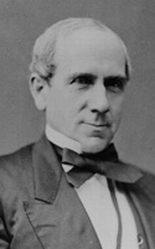University of Iowa College of Law
Law school in Iowa City, Iowa, US From Wikipedia, the free encyclopedia
Law school in Iowa City, Iowa, US From Wikipedia, the free encyclopedia
The University of Iowa College of Law is the law school of the University of Iowa, located in Iowa City, Iowa. It was founded in 1865.[4]
| The University of Iowa College of Law | |
|---|---|
| Established | 1865 |
| School type | Public |
| Dean | Kevin K. Washburn |
| Location | Iowa City, Iowa, U.S. |
| Enrollment | 420 (2017)[1] |
| Faculty | 43 full-time (2017)[2] |
| USNWR ranking | 36th (tie) (2024)[3] |
| Website | www |

The law school was founded in 1865 by George Grover Wright and Chester C. Cole as an independent law school in the state capital of Des Moines as Iowa School of Law, but it moved to Iowa City and became part of the University of Iowa in 1868. It is the oldest law school west of the Mississippi River. Iowa's College of Law is said to have graduated the first female law student in the nation, Mary Beth Hickey, in 1873.[5] The second woman to graduate from Iowa Law was Mary Humphrey Haddok in 1875, who later became the first woman admitted to practice before the U.S. District and Circuit Courts.[6] Alexander G. Clark, Jr. was the first African American to graduate from the law school, and his father Alexander G. Clark was the second. The senior Clark was ambassador to Liberia in 1890–1891.

When the Law Building was built in 1986, the project included a low-rise library, classrooms, auditoriums, moot courts, and administrative facilities. The architect was Gunnar Birkets & Associates and the structural engineer was Leslie E. Robertson Associates. The law library has the second-largest collection of volumes and volume-equivalents and the second or third largest number of unique individual cataloged volume and volume-equivalent titles among all law school libraries.[7] It contains more than one million volumes and volume equivalents and is one of the largest and finest collections of print, microform, and electronic legal materials in the United States.[8]
For more than 30 yrs, the law school has sponsored "Bridging the Gap," a minority pre-law conference held at the law school.[9] It participates in, and supports, CLEO and PLSI.
The Boyd Law Building is located in the center of the campus on a bluff overlooking the Iowa River.
The Law School has four academic journals, including the Iowa Law Review, founded in 1915 as the Iowa Law Bulletin. It is a scholarly legal journal, analyzing developments in the law and suggesting future paths for the law to follow. The Iowa Law Review ranks high among the top "high impact" legal periodicals in the country, and its subscribers include legal practitioners and law libraries throughout the world.
According to the Iowa College of Law's official 2019 ABA-required disclosures, 89.3% of the Class of 2019 obtained full-time, long-term, JD-required employment within nine months after graduation.[11] Iowa's Law School Transparency under-employment score is 5.7%, indicating the percentage of the Class of 2019 unemployed, pursuing an additional degree, or working in a non-professional, short-term, or part-time job nine months after graduation.[12]
The total tuition and mandatory fees for the 2024–2025 academic year are $32,512 for Iowa residents and $53,759 for non-resident students.[13]
Seamless Wikipedia browsing. On steroids.